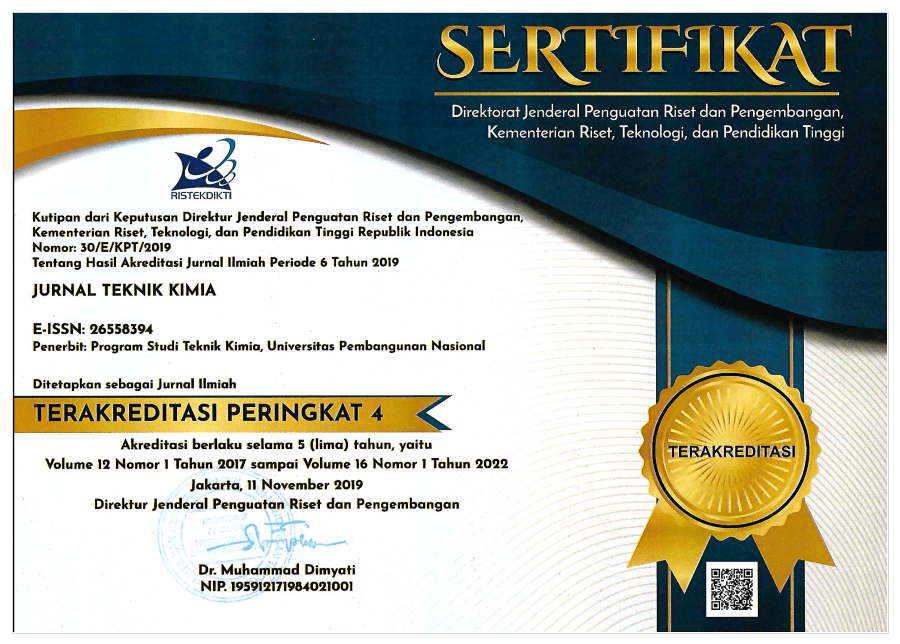REDUCTION OF LEAD (Pb) LEVELS IN RED KUPANG (MUSCULISTA SENHAUSIA) USING WULUH STARFRUIT (AVERRHOA BILIMBI) EXTRACT
Abstract
Red kupang (Musculista senhausia) is one of the protein-rich fisheries resources that is widely consumed by the population. However, red kupang contains a significant amount of heavy metal. This can be harmful to people if consumed in the long term and not processed properly. The boiling method that has been used to remove heavy metals is not effective, especially for reducing the levels of lead (Pb), which is difficult to dissolve in water. The accumulation of lead (Pb) in red kupang can be reduced by extracting it using citric acid, a chelating agent. This study aims to determine the effect of differences in citric acid concentration (0.5%v/v, 1%v/v, 1.5%v/v, 2%v/v, and 2.5%v/v) from starfruit juice solvent and stirring speed (150 rpm, 180 rpm, 210 rpm, 240 rpm, and 270 rpm) in the solid-liquid extraction method (leaching) on lead (Pb) levels in red kupang. Analysis of lead (Pb) levels was carried out using AAS. The analysis results showed that the levels of lead (Pb) tended to decrease as the stirring speed and citric acid concentration increased. The best results were obtained at a citric acid concentration of 2.5%v/v and a stirring speed of 210 rpm, which resulted in a residual lead (Pb) levels of 0.251 mg/kg. The results are in accordance with SNI 7387:2009, which states that the limit for lead metal contamination in food is 1.5 mg/kg.
Full Text:
Refbacks
- There are currently no refbacks.









